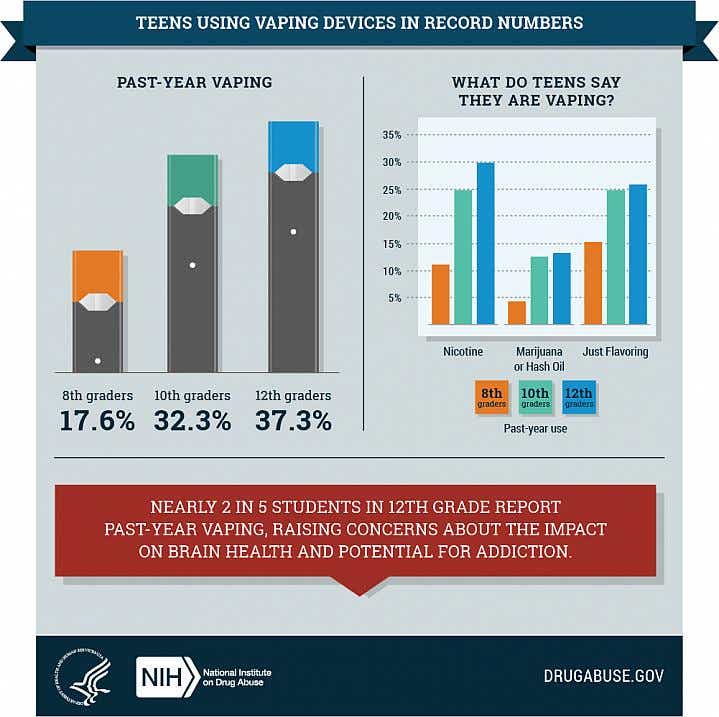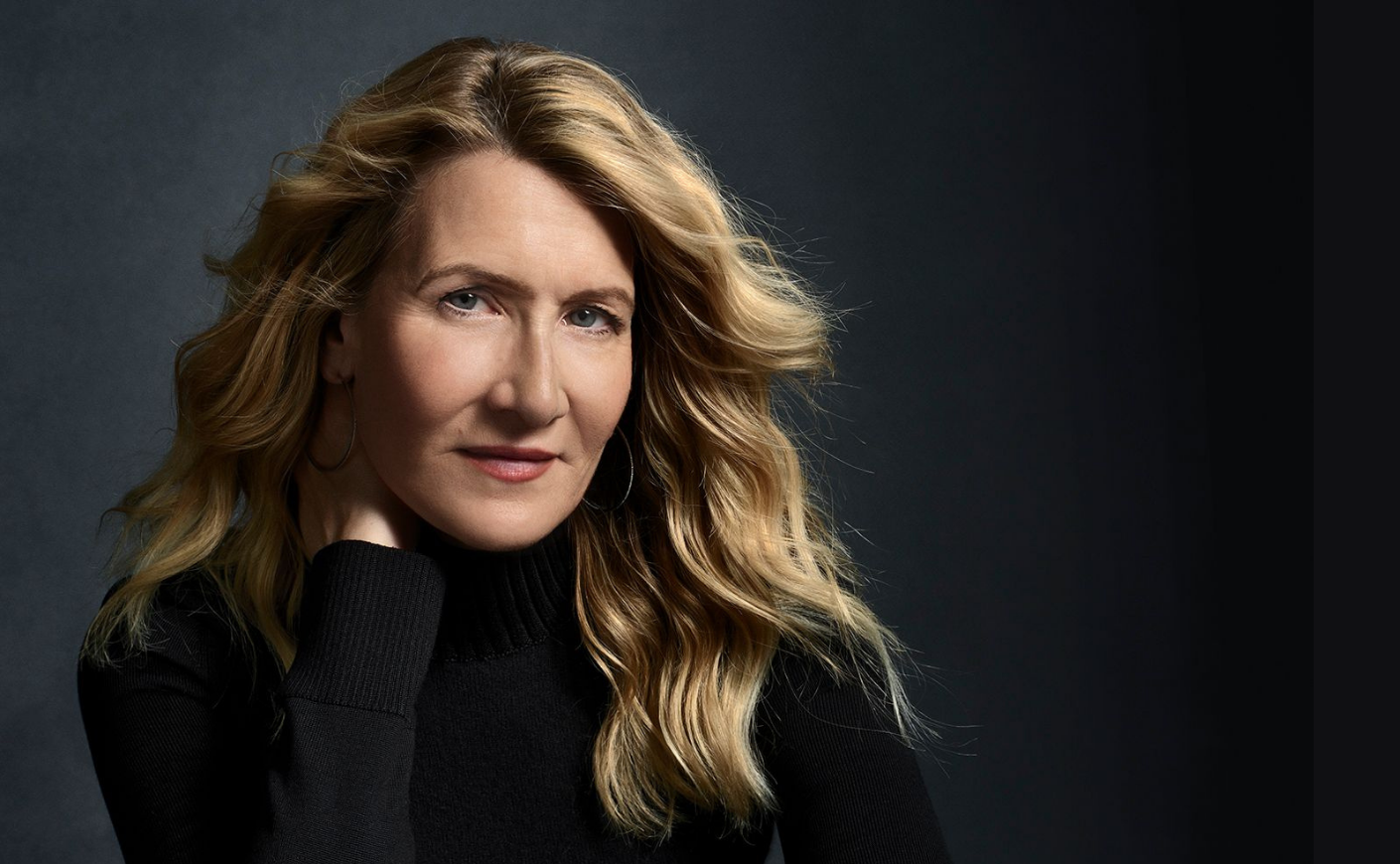Concerned about the countless teenagers you’ve seen puffing vape smoke in the air? You’ve got good reason to be: In 2020, more than 3.5 million high school and middle school students self-reported they were currently using e-cigarettes. (Shockingly, that number is actually a decrease from 2019.) And the FDA testified before congress in June of 2021 that the youth vaping epidemic is far from over: As students prepare to head back to in-person school, experts fear that peer pressure will bring vaping levels right back to where they were pre-pandemic.
In an effort to head off that possibility, the American Lung Association is launching a new Vape-Free Schools Initiative aimed at giving kids the support they need to quit vaping or — even better — never start. The initiative includes training for educators in the ALA’s INDEPTH alternative-to-suspension program and its Not-On-Tobacco cessation program.
KCM spoke with pediatric pulmonologist Dr. Christy Sadreameli and award-winning actress — and advisor to the ALA board of directors — Laura Dern about that new initiative and why vaping isn’t nearly as innocent as you might think. “I’m raising a teenager in high school and I’m begging her,” says Dern, “to understand what a slippery slope this is.”
KCM: When did the rise in youth vaping start?
Dr. Sadreameli: It’s not that long ago. Do you remember the EVALI [electronic cigarette, or vaping, product use–associated lung injury] crisis in 2019, when people got very sick from vaping very suddenly? Even though that was its own specific thing — it still happens, but we’re not seeing it at high rates — it was very scary for people. I feel like ever since that, I’ve seen a lot more people, both parents and teens, have negative associations with vaping. That was a lightning rod, in terms of people really paying attention.
There’s been a decrease in EVALI cases since then — do you think it’s because of regulations around vaping devices, or decreased vaping levels?
Dr. Sadreameli: I don’t think it’s from regulation because, far and away, these things are not regulated. A federal judge has determined that these devices need to go through FDA review, but that really hasn’t happened yet. Only very specific things were taken off the market, like certain flavors of reusable pods, and none of that was really linked to EVALI.
What motivated you to get involved with the Vape-Free Schools Initiative?
Laura Dern: I actually went to the American Lung Association asking how I could be more educated about vaping, because I was seeing some really devastating emergencies around me — teenagers I knew being hospitalized, and even one who got popcorn lung. Many people I knew, adults and teens, were vaping and using e-cigarettes because they were told it was the safe alternative to smoking and it was cool, it was just fruit-flavored liquid, it wasn’t that much nicotine and you actually couldn’t really get addicted to it, and it didn’t cause any problems because there was no smoke.
I started seeing articles and then learning from the American Lung Association that in these few years, with brilliant advertising and horrific, unconscious advertising, youth vaping levels had grown to close to one in five teens, and the youth vaping rates are 73% greater than they were four years ago. And that’s with the wake up call and all the articles saying actually it’s even more dangerous with the level of heavy metals and chemicals, as well as the amount of nicotine. I knew a kid who was hospitalized and almost died from nicotine poisoning, not knowing that in an hour of hanging out and vaping with his friends, it was like he’d smoked 20 cigarettes. Watching families go through that without the knowledge was terrifying. I’m so moved and excited that the ALA has launched this initiative and that they are providing schools this desperately needed online training so that more kids can access cessation support and education they need to quit for good.

What will the training do for schools?
Dr. Sadreameli: It’s not meant to be punitive, and it’s also not forcing cessation on anyone: I meet people all the time — some parents, too — who aren’t ready to quit until we talk about what it would look like, and the timeframe. You don’t have to be a doctor to be a good resource for this. Schools are really the frontline with kids, and they’re also the site of a lot of vaping, so it’s appropriate that they’re also a site for cessation and empowerment and education.
What do you typically say to your patients who vape?
Dr. Sadreameli: I’m always interested in understanding where they are with it: Are they using it actively? How long has it been going on? Part of this initiative from the American Lung Association is trying to help schools learn how to do some of what I do, and be a better resource for teens. If I hear someone’s using a pod per day, that’s roughly like smoking a pack of cigarettes a day. I know that if that person wanted to quit cold turkey from there, they might need nicotine-replacement or extra support to set them up for success. So some of this training for the schools is helping them have some of the knowledge I have.
I’m only seeing the very tip of the iceberg: Usually if someone’s coming to me, they’re already having a lung problem. A lot of teens want to quit, I’ll tell you that. This will help schools be a frontline for that, and the goal is for a thousand schools to be able to do it.
The ALA notes that post-pandemic stress may further contribute to the youth vaping epidemic. Were you surprised to learn how much stress plays a role in this trend?
Laura Dern: I wasn’t surprised, given how we’ve watched people manage stress and anxiety and depression around us our whole lives. But we’re in an emergency, because the statistics show teens and young adults to be some of those most impacted by anxiety and stress during the pandemic. The most important intervention for parents and educators is to learn how to support kids, because they’re going back to school for the first time in a year and a half with the anxiety and social anxiety of having been in their room on Zoom this whole time. If kids are using vaping as their stress-management tool and other kids want to fit in with them, that could be disastrous.
How has COVID impacted on youth vaping levels — or our ability to track youth vaping levels?
Dr. Sadreameli: Last year there was a small decrease, because kids were out of their peer environment. But we’re comparing that to exponential increases every year up to that point. We’re now talking about more than 3 million kids vaping nationwide. I’d love to not see these depressing increases all the time, but I’m prepared that it may look worse next fall after this one, after kids are back in school.
How do you make sure you’re talking about vaping effectively?
Laura Dern: The first time a young teenager told me about vaping, I thought it was a safer alternative to cigarettes, and I was thinking “Oh, thank God.” They told me that it didn’t really have nicotine and it gave them something to do at a party that wasn’t a cigarette and they would never smoke cigarettes. They didn’t know they were about to be severely addicted to nicotine, find out vaping was unsafe, and then eventually turn to cigarettes. I’m doing this to help to other parents, because I didn’t have the information. I’m raising a teenager in high school and I’m now begging her, without any judgment, to understand what a slippery slope this is, and give her the truth. People are suffering with so much stress and anxiety right now, so we really have to help educate each other about the dangers of vaping. And that’s true for everyone, not just the youth.









